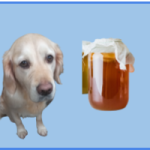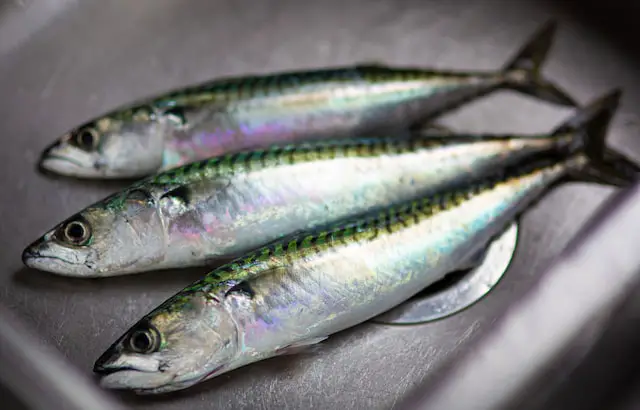
Stock cubes are one of those staple “hacks” that we all have in our kitchen.
They have been around since the early twentieth century when the likes of Knorr and Oxo started to manufacture and sell them.
Which is, when you think about it, way before there was such a thing as “hacks”.
Depending on where you live, stock cubes have many different names- whether the bouillon cubes, stock cube (not the tradable kind), or broth cube, are all the same.
In short, it’s essentially dehydrated chicken stock forged with Michelin-star-hammers to small, coin-sized cubes. Your dog reading alongside you might be wondering: “So, um, human, can I eat these already?”
To answer that, we’ve got everything you need to consider and be aware of before deciding to treat your furry friend some savory cubes. Without further ado, let’s jump right to it!
What are the ingredients in a chicken stock cube?
Apparently, there are two types of chicken stock cubes, regular and sodium-free. Apart from the obvious, is there really any difference? Rest assured, we read your mind from a mile away (and no, we’re not aliens).
Regular
These regular stock cubes are definitely much tastier than the saltless version for both humans and dogs. Some of its main ingredients are the following: Sodium, Onion powder, Corn Starch, and Chicken Fat. As friendly as these ingredients may seem, this is where your dog-owner-senses should start tingling, and here’s why:
Salt
A pinch of salt on your dog’s meals is perfectly okay, as your furry pal naturally requires sodium to balance out their electrolyte levels. But when fed one sprinkle too many, that becomes an issue. Excess sodium in dogs may be dangerous as it may lead to Salt Poisoning (yes, it’s a real thing). This stiffens the dog’s muscles due to lack of moisture and can be lethal if left untreated.
Some symptoms include vomiting, diarrhea (oh goodness no), excessive thirst and urination, and more. If you suspect your pal experiencing any of these, go to your vet to receive prompt treatment and guidelines to neutralize the threat.
Onion/Garlic Powder
Whether it is raw, cooked, or in powdered form, garlic and onions are both a huge no-no due to their toxicity when ingested by dogs. When overeaten, this may lead to anemia, where the dog’s red blood cells lose their ability to transport oxygen as they usually would. Some of these symptoms include:
- Weakness
- Unusually low appetite
- Pale gums
- And more.
So, as undeniably mouth-watering, they may smell and taste; keep these to yourself and have enough courage to say no to your furry friend (we believe in you!)
Corn Starch
We are relieved to announce that corn starch is deemed safe for dogs (finally, some good news)! Apparently, corn starch is a typical ingredient in most dog foods, but it may not be a reliable nutritional source. Corn starch is used to help thicken your pal’s food for a more convenient and satisfying dine after a long day at the park.
Chicken Fat
While it may sound like another bad news, it is not (don’t worry). Chicken fat is a digestible fat source with high levels of Omega-6 (healthy fats essentially). Best of all, it makes your furry pal’s foods taste twice as better than they would be without them!
However, though not for all dogs, if you catch your pal experiencing some allergies due to chicken fat, this is a normal immune response to protein. Suppose you’re still unsure or have any form of concern, we definitely recommend consulting with your vet for expert and thorough advice.
Sodium free
The saltless version has similar ingredients to regular chicken stock cubes. Though it may sound safer, there are some ingredients to be aware of before giving the green light for your furry pal sitting right next to you. Some of these ingredients include Sugar and Gelatin.
Sugar (Oh honey, honey)
Just like salt, dogs, too, need sugar as an essential part of maintaining a healthy and functional body. Sugars serve as carbs to energize your pal with glucose to get them to run and jump at will. However, if too much, it may lead to several health issues. Just like when humans eat one too many cookies, dogs can be at risk for cavities, weight gain (summer body threat), and diabetes (no, their pee will not be candy-flavored). To be safe, always be sure to check the label for how much sugar is in its content before feeding it to your beloved furry bestie.
Gelatin
Pay close attention to this one right here. Gelatinous foods (in this case, from chicken stock) can be an excellent choice for a protein source and is safe to eat for your furry friend. But Gelatin found in jello can be toxic to dogs (due to its artificial sweeteners). In short, gelatin found in chicken stock is a-okay! (But as a side note, keep Jello as far away from them as possible).
Chicken stock cube, Chicken bouillon, and Chicken Broth: What’s the difference?
The boui-what now? (We’re definitely adding this to our vocabulary book). Stock cubes, bouillon, and broths may be confusingly interchangeable at times, but don’t you worry! We’ll be sharing some wisdom and insight on how to distinguish the three. Ready? Alright, let’s do this!
Stock Cube
While we strive to not be captain obvious here, it is as it says! They’re essentially dehydrated chicken stock made from chicken bones, some lean greens, a sprinkle of seasoning, and of course, water. Which is then compressed to form cube-like bits and usually come in packets you can find in a stroll to the groceries.
Bouillon
In case you were wondering (as we were), it’s correctly pronounced as bool-yone. Bouillon is pretty much the same as that of chicken stock. The only difference is, instead of being made from simmering bones, these are made from simmering meat. While stocks are usually only lightly seasoned or not at all, Bouillons, on the other hand, come in packed with flavors. That includes salt (which you may need to watch out for).
Broth
The best go-to meal on a cold rainy, or snowy day, while you’re seated by the fire, slurping alongside your tail-wagging companion. Unlike the duo up there, broths are made with pure meat (with the bones), which usually gives off a more enriching taste.
However, it generally contains quite a pinch of salt, which may be a red flag for high sodium levels.
If you are worried about if chicken broth can cause diarrhea be sure to check out my article.
And if you want to know if dogs can eat shop bought broth such as Swanson, read this.
So the next time anyone asks you this, you are now an official expert in differentiating the three, congrats!
Can dogs eat chicken broth with onions or garlic?
As slurping-ly delicious as it may smell and taste, broths containing garlic/onions is a huge red no. While the broth itself should be fine in most cases, it’s the onions and garlic that make them toxic for our furry pals (huge bummer, we know).
Significant consumption of onions or garlic may lead to anemia (decreased ability to transport oxygen through red blood cells) if left untreated and unnoticed. So it’s vital that you know the symptoms and when to take your pal to the local vet. So here they are:
- Lethargy
- Pale Gums
- Vomiting (oh dear)
- And more.
To avoid these in the first place, always double-check those lists of ingredients before feeding them to your tail-wagging companion. If you’re unsure, consult with your vet whether chicken broths would suit your dog’s nutritional needs. And
Dog-friendly homemade chicken stock recipe
If Gusteau from Ratatouille says anyone can cook, then so can you! And if you’re not a Michelin-star chef (yet), that’s perfectly fine! We’ll walk you through one of the finest recipes that will have your furry pal get you that 5-star rating on Yelp for dogs. So here’s your secret chicken broth recipe:
- Fill up a stockpot up to 3 inches with water, then gently place the chicken into it.
- Heat it up to boil, then simmer for 60 minutes (we recommend playing some jazz while you’re at it)
- Move the chicken out of the water and store it to be used for another meal
- Remove all the cooked chicken bones to prevent our pals from choking on them
- Refrigerate that juicy broth to say goodbye to those fats before freezing
- Bon Appetit!
We entrust that this secret recipe is in safe hands, and may we inform you that this mouth-watering (literally) delight can be stored for up to 4 days in the fridge. If you have leftovers, freeze them in an ice tray and store those cubes in sealed plastic bags for future consumption.
How to use chicken stock with your dog?
If you’re feeling a little Picasso or Da Vinci-ish, then we shall unleash the creative chef in you! We’ve gathered the top 3 different ways to use chicken stock with your dog, so here they are:
- Vet-approved homemade dog treats. All you need is flour, some oats, peanut butter, and chicken broth, obviously. And before you ask, we’ve got the recipe just for you right here!
- Brothsicles (what a genius name). To cool off some steam in the summer heat. Simply freeze your previously cooked chicken stock broth into a popsicle or in ice cube trays.
- Soft-serve “ice cream.” Simply blend dog-safe fruits such as seedless watermelons with plain and unsweetened yogurt and chicken broth to serve your pal’s very own ice cream!
For more recipes and dog-treat-wisdom, check out the full list!
Can dogs eat other shop-bought flavored stock cubes?
As a matter of fact, yes! Though you should be careful of its contents, and just in case, we have a few recommended brands your pal might be able to try (and yes, it is dog-friendly!):
Before purchasing or feeding them, be sure to talk with your vet on whether these brands would suit your buddy’s diet and health.
What about cream of chicken soup?
Some of us may not have a stock cube to hand but we might have a can of soap.
So how appropriate would sprinkling your dog’s food with a bit of soup be?
The good news is that as a one of pouring a small quantity of soap over your dog’s food won’t do them any harm.
But to use it regularly with your dog is probably a no-no.
Other ways to make (dry) dog food tastier
To take the tasting game notch higher, there are plenty of ways to give that regular dog food some dazzle:
- Add warm water. A simple hack, yet effective!
- Animal products. Some of our recommended favorites include: fish (sardines or salmon), eggs, and lean meat (beef, chicken, turkey, etc.)
- Fruits and Veggies. A great way to give some boost to essential vitamins and minerals! For a list of dog-friendly fruits and greens, check this out!
- And more!
And before you know it, you might just be on your way to the top league of dog chefs!
Best chicken stock cube for dogs
Ladies and gentlemen, we would like to proudly announce the best dog-friendly chicken stock cube. After careful consideration and an epic debate between the judges, the 2021 chicken stock cube winner goes to Brutus Bone Broth (*imaginary crowd screaming*)!
Brutus offers bone broth like no other. This includes naturally-derived ingredients and flavors; its non-GMO properties, digestibility, and skyrocketing immune booster makes it the ultimate combo for your pal’s diet! We know high sodium content is not the way to go, so Brutus lowered them down just for your furry bestie while still keeping those flavors alive!
Mind you that this product is consumable for all dogs that will have your dog wolfing down those moistened dry treats!
Can dogs eat chicken stock cubes?
Whether you’re feeling under the weather, a little soup-y, or tired after a long and cold day, chicken stock cubes are just the way to go for that warm, savory chicken broth for the both of you. Whether you choose to purchase from the store online, the groceries, or even making them at home from scratch, always be mindful of the knowledge we’ve bestowed upon you. Remember to keep your dog away from high sodium, onion/garlic powder, and high sugary stock cubes to keep your pup as healthy as it’ll ever be!





